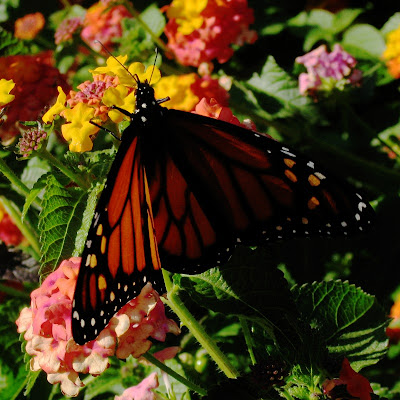Raptors are not the only animals migrating through Cape May right now. While I was sitting in the banding blind, I watched many Monarch butterflies fluttering through our station. All of them were moving in one direction – left to right (that is, east to west). Many bumped into the mist nets, but unlike the dragonflies, none got caught. On most days last week, several would pass by per hour. During the peak of migration, the number can be much more than that.
Cape May attracts Monarchs for much the same reason as it attracts birds: it is a southward-pointing peninsula flanked on all sides by large bodies of water. Migrants traveling south along New Jersey's coast concentrate at Cape May as they choose whether to attempt crossing the Delaware Bay or take the longer route to a narrower part of the bay farther north. My impression is that most Monarchs cross the bay, like songbirds but unlike raptors. It is amazing to think that such delicate creatures are capable of such long water crossings.
Migration is not without hazards. Some butterflies become tattered and worn, through either the stress of migration or narrow escapes from predators.
Monarchs repel many predators, such as birds, with their orange coloration, which signals that the butterflies are distasteful. (Monarchs derive a toxin from milkweed.) Some Monarchs do not escape predation, however. This Monarch wandered too close to a mantid. (For more on mantids, see Killer Fairies.)
The Cape May Bird Observatory runs a Monarch monitoring project in Cape May Point. Monarchs are caught, recorded, and tagged with stickers provided by MonarchWatch. As with bird bands, the tags will identify a Monarch if it is found and reported.








